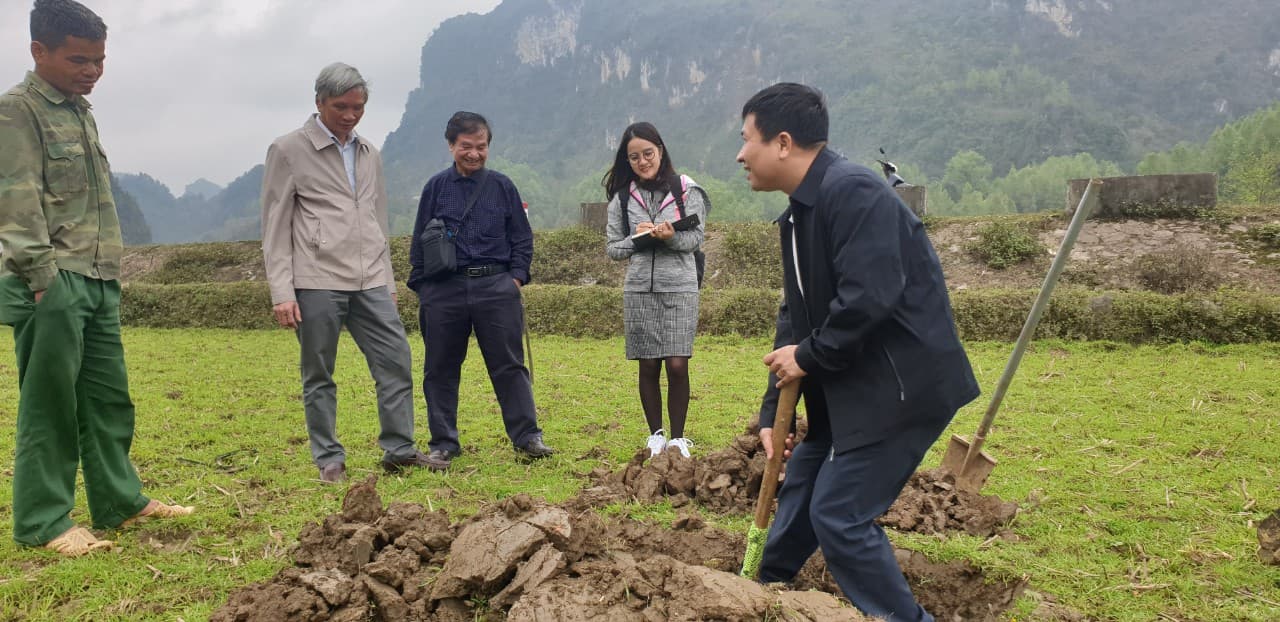ĐÁNH GIÁ HIỆU QUẢ GIẢM NHIỆT CỦA CÁC GIẢI PHÁP THỤ ĐỘNG TẠI KHU NHÀ Ở XÃ HỘI ỨNG DỤNG MÔ PHỎNG ENVI-MET
Phan Kiều Diễm1*, Trần Gia Hồng1*, Ngô Hoàng Ngọc Dũng2, Nguyễn Kiều Diễm1, Nguyễn Phương Duy3, Cao Thị Minh Thảo3
[1]Bộ môn Tài nguyên Đất đai, Khoa Môi trường và TNTN, Trường Đại học Cần Thơ2Bộ môn Kiến trúc Môi trường, Khoa Kiến trúc và Quy hoạch, Trường Đại học Xây dựng Hà Nội
3Viện Kinh tế – Xã hội, thành phố Cần Thơ
*E-mail: pkdiem@ctu.edu.vn (Phan Kiều Diễm); tghong@ctu.edu.vn (Trần Gia Hồng)
TÓM TẮT
Nghiên cứu đánh giá hiệu quả các giải pháp giảm nhiệt thụ động tại khu nhà ở xã hội bằng mô phỏng vi khí hậu qua phần mềm ENVI-met, thông qua sử dụng dữ liệu quan trắc và bản vẽ thực tế hiện trạng khu vực nghiên cứu. Các kịch bản mô phỏng được xây dựng dựa trên ý kiến chuyên gia, kết hợp cây xanh và vật liệu lát nền để tìm ra giải pháp tối ưu. Hiệu quả mô phỏng được đánh giá qua nhiệt độ không khí (Ta) và chỉ số cảm nhận nhiệt (PET). Kết quả cho thấy kịch bản bố trí cây xanh, đặc biệt loại cây cao 15 m, giúp giảm Ta từ 0,35°C đến 0,41°C và PET từ 0,55°C đến 0,59°C so với kịch bản sử dụng cỏ. Trong khi kịch bản bố trí riêng lẻ có cây xanh hoặc vật liệu lát nền ít tác động đến tiện nghi nhiệt. Nghiên cứu cung cấp thông tin góp phần hỗ trợ trong thiết kế cảnh quan đô thị nhằm giảm hiệu ứng đảo nhiệt và hướng đến phát triển thành phố xanh tại Cần Thơ.
Từ khóa: vi khí hậu, ENVI-Met, mô phỏng, giảm nhiệt
SUMMARY
Evaluation of the heat reduction effectiveness of passive solutions in social housing area using ENVI-Met simulation
Phan Kieu Diem1, Tran Gia Hong1, Ngo Hoang Ngoc Dung2, Nguyen Kieu Diem1, Nguyen Phuong Duy3, Cao Thi Minh Thao3
1Department of Land Resources, Faculty of Environment and Natural Resources, Can Tho University
2Department of Environmental Architecture, Faculty of Architecture and Planning,
Hanoi University of Civil Engineering
3Institute of Socio-Economics, Can Tho City
The study evaluates the effectiveness of passive heat reduction solutions in social housing areas by simulating the microclimate using ENVI-Met software, incorporating input from monitoring data and on-site observation. Simulation scenarios were developed based on expert recommendations, combining vegetation and paving materials to identify optimal solutions for heat reduction strategies. Effectiveness was assessed using air temperature (Ta) and the Physiological Equivalent Temperature (PET) metrics. The results indicate that trees-particularly those 15 meters tall-can reduce Ta by 0.35 – 0.41°C and PET by 0.55 – 0.59°C compared to scenarios utilizing only grass. In the presence of trees, the influence of paving materials on thermal comfort is minimal. This study supports value information for urban landscape design strategies aimed at mitigating the urban heat island effect and promoting green city development in Can Tho, Vietnam.
Keywords: microclimate, ENVI-Met, simulation, cooling.
Ngày nhận bài: 25/3/2025
Ngày thông qua phản biện: 15/5/2025
Ngày duyệt đăng: 16/6/2025
 Tạp chí
Tạp chí




